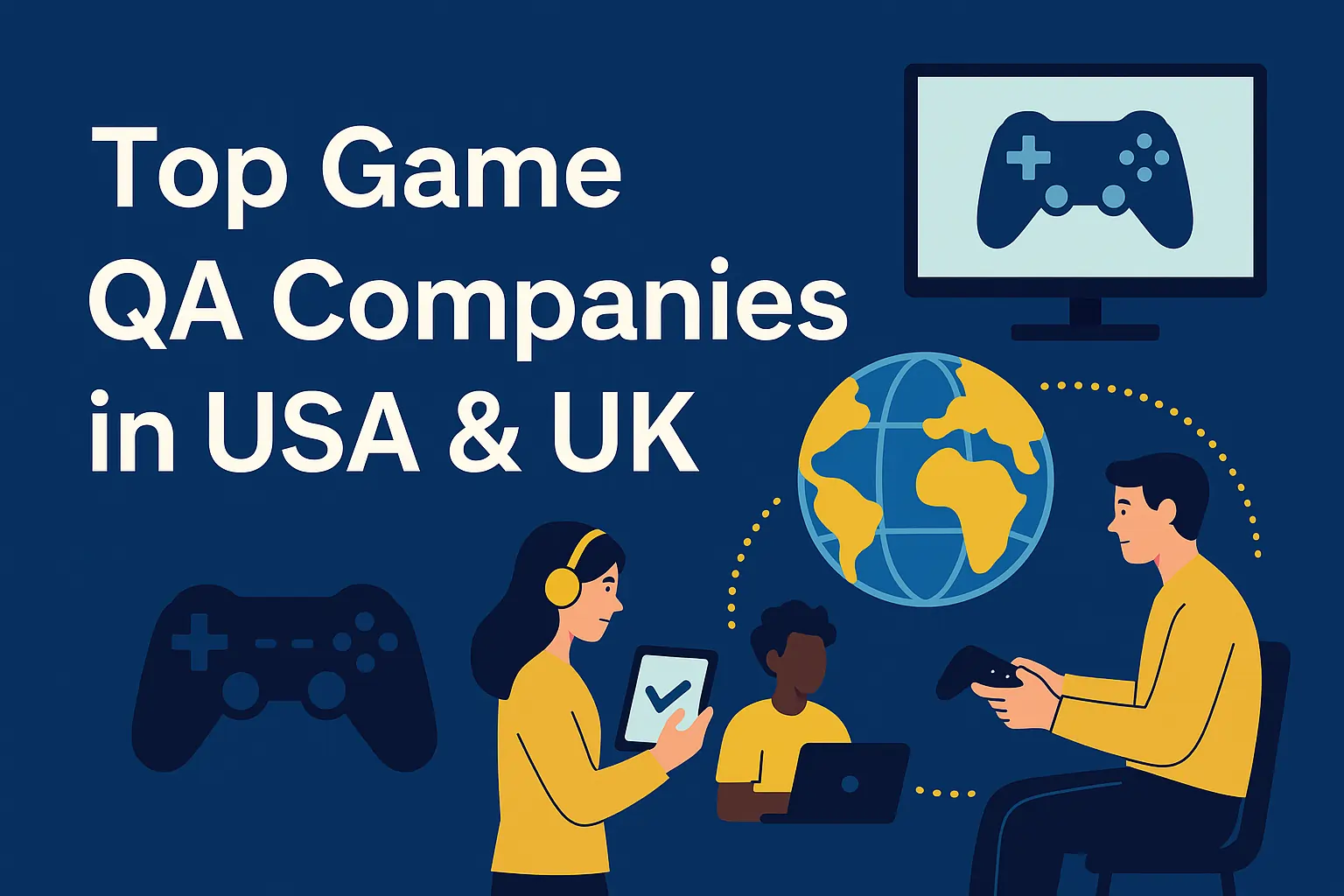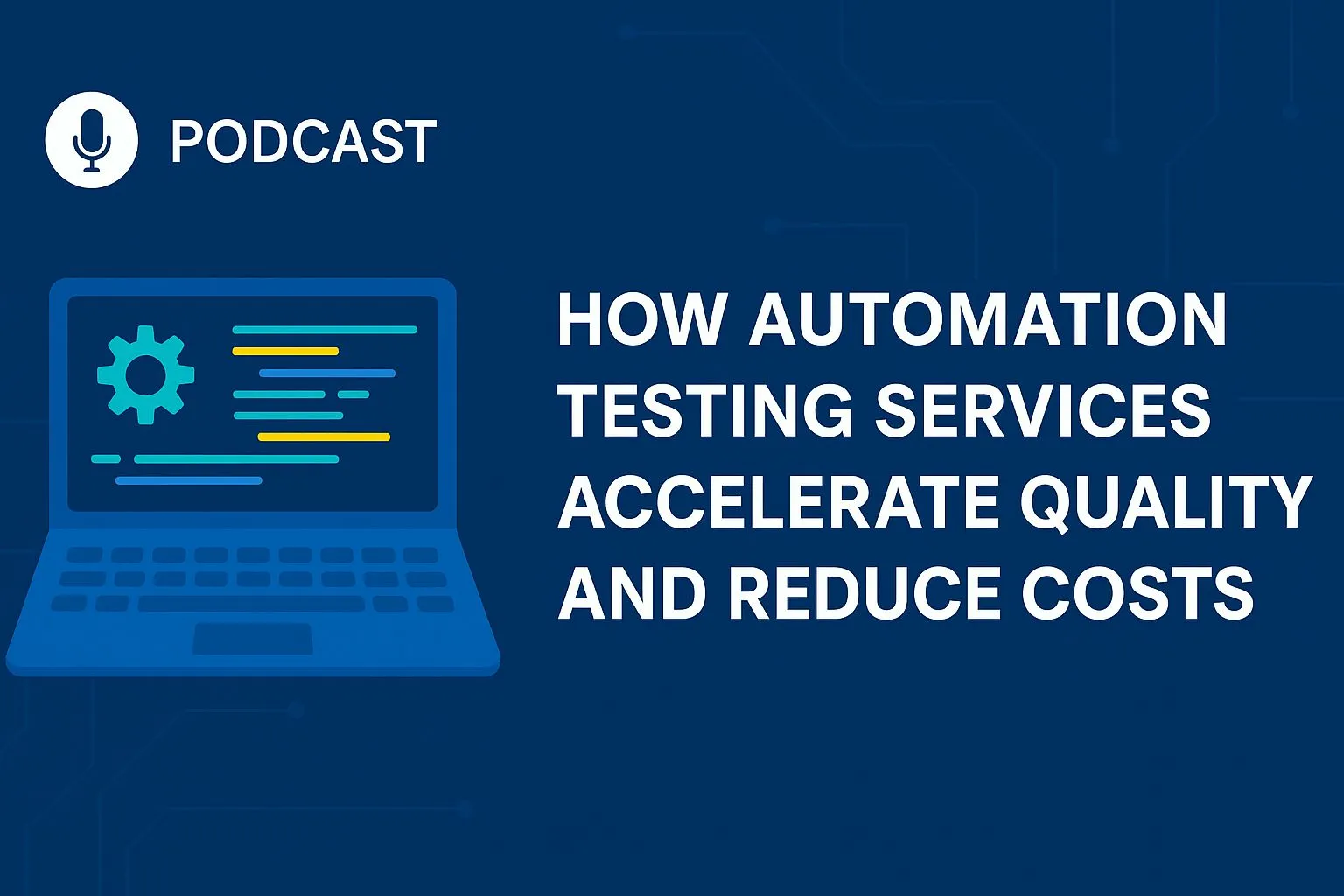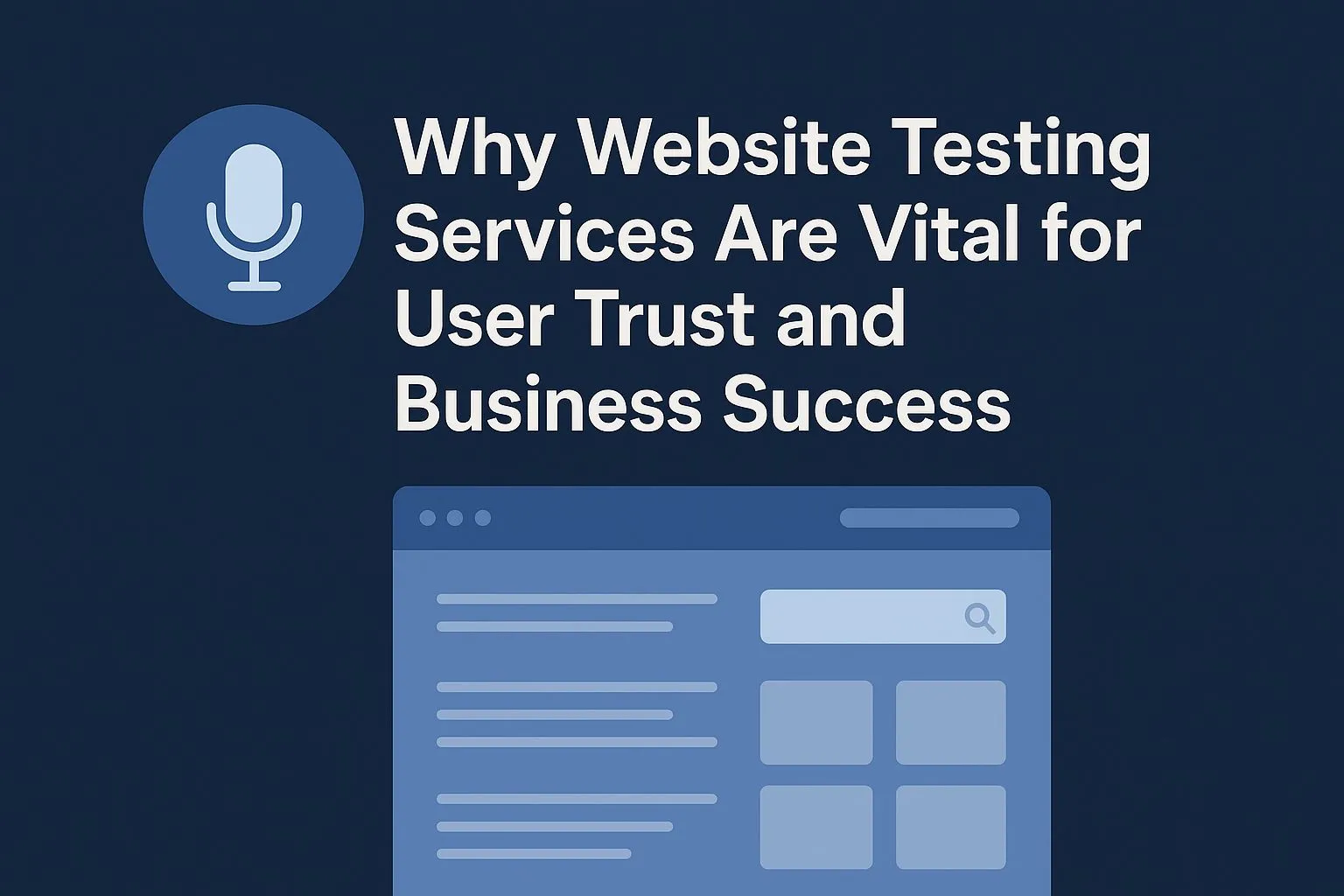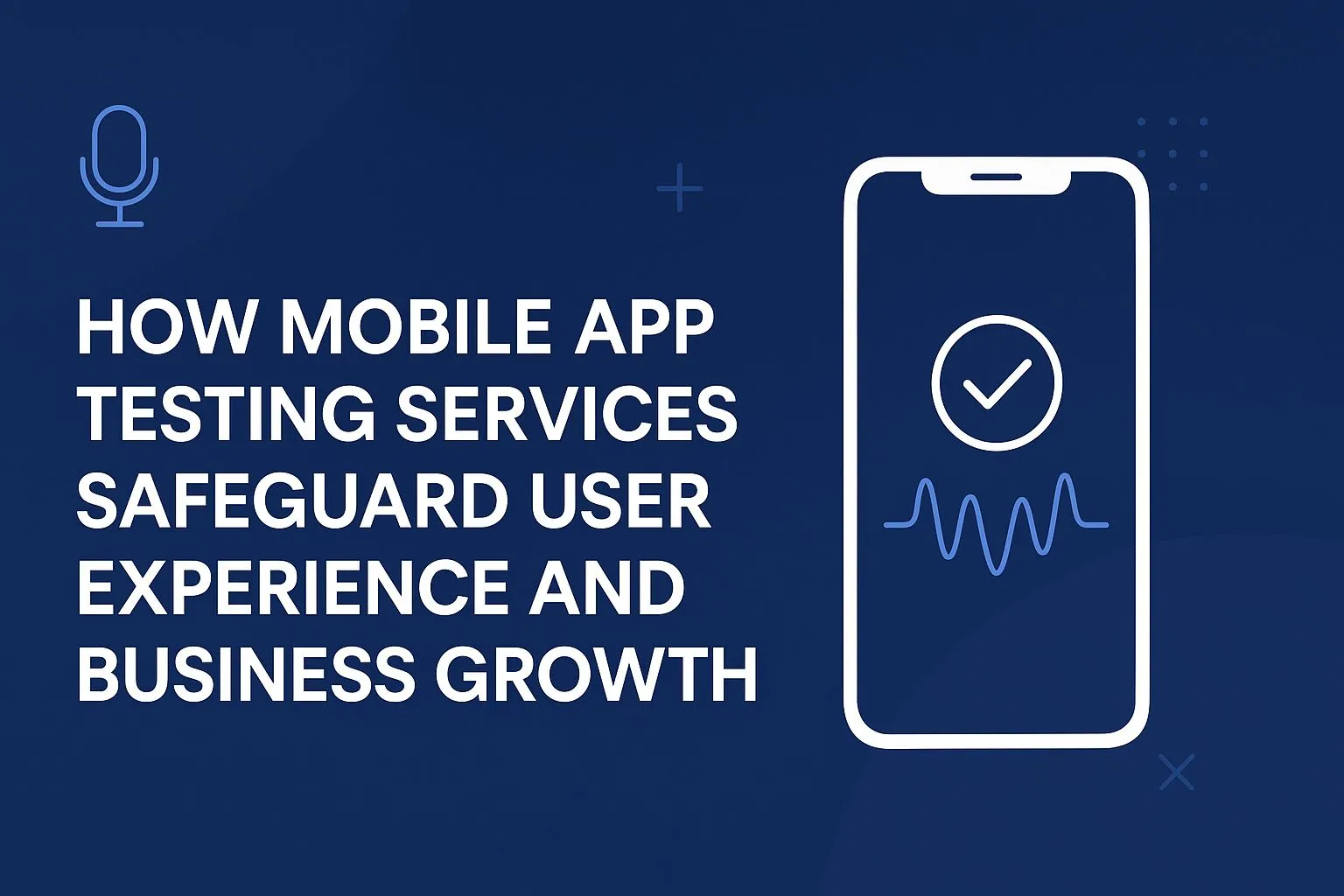How Do I Hire a Game Testing Service for My Indie Game? (Full Guide for Indie Developers)
Launching an indie game is exciting, yet it also brings unique challenges. Indie teams usually handle programming, design, sound, and publishing themselves, which means testing often becomes an afterthought. However, without proper QA, even the most creative indie game can suffer from crashes, lag, broken levels, or frustrating bugs. Because players expect polished experiences, hiring a professional game testing service becomes essential for a smooth release.
In this guide, you’ll discover how to hire the right game testing partner, what to prepare before onboarding testers, and how to ensure you get maximum value while staying within an indie-friendly budget. Additionally, the guide walks through the exact steps indie developers use worldwide to find reliable QA support.
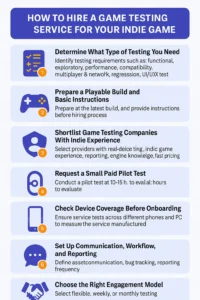
Why Indie Games Need Professional Testing
Indie developers often skip formal QA because of time or budget constraints. However, thorough testing significantly improves player experience. Moreover, proper QA helps ensure better reviews, higher retention, and smoother launch-day performance.
For instance, many indie games break on low-end devices, freeze during high-action moments, or behave differently across OS versions. Consequently, external testers help uncover hidden issues early. In addition, they provide unbiased feedback, something internal teams rarely achieve.
Because indie titles rely heavily on gameplay feel, balance, and progression flow, professional QA helps polish every detail.
Step 1 — Determine What Type of Testing You Need
Indie games vary widely in genre, scope, and complexity. Therefore, the first step is knowing what kind of testing your project requires. Once you understand your scope, hiring becomes easier.
Common Testing Types for Indie Games
Functional Testing
This verifies basic gameplay mechanics such as movement, interactions, AI, menus, checkpoints, and level progression.
Exploratory Testing
QA testers play freely to uncover unexpected bugs. Because indie games often have unique mechanics, exploratory testing is highly valuable.
Performance Testing
This identifies FPS drops, heating issues, memory leaks, long load times, and rendering delays. Since many indie games are mobile-first, performance issues directly affect ratings.
Compatibility Testing
Your game must run smoothly on multiple screen sizes, device types, GPUs, and OS versions. Therefore, compatibility testing is essential.
Multiplayer & Network Testing
If your game includes online modes, testers evaluate latency, sync accuracy, reconnections, and matchmaking quality.
Regression Testing
Every update introduces new bugs, so regression ensures older systems remain stable.
UI/UX Testing
Usability plays a huge role in player experience. Consequently, testers evaluate menus, readability, control sensitivity, and onboarding quality.
After listing your needs, you can clearly explain your requirements to the QA team.
Step 2 — Prepare a Playable Build and Basic Instructions
Once you identify your testing needs, prepare the necessary information for the QA team. This step dramatically improves testing speed and accuracy.
Provide the QA team with:
- Latest APK, IPA (TestFlight), EXE, Steam key, or WebGL link
- Gameplay instructions
- Control layout
- Debug commands (optional)
- Level access or cheat codes
- Test accounts or login info
- List of known issues (optional)
Additionally, clarify your priorities. For example, you can mention whether you want testers to focus more on multiplayer stability, puzzle logic, FPS performance, or level flow.
Step 3 — Shortlist Game Testing Companies With Indie Experience
Not every QA service understands game logic. Some companies only test mobile apps, while others specialize in enterprise software. Therefore, choose a team with strong game testing background.
Qualities to look for:
Real-Device Testing
Testing must be done using real hardware. Emulators are helpful for early testing but cannot replace real-device behavior.
Experience With Indie Games
Indie titles often include experimental mechanics, non-linear progression, or unique physics. As a result, testers must think creatively.
Structured Reporting
Bug reports must include reproducible steps, videos, screenshots, device data, and severity labels.
Flexible, Indie-Friendly Pricing
Indie studios need scalable QA, not expensive enterprise plans.
Engine Knowledge
Testers familiar with Unity, Unreal, or Godot understand common bugs such as collisions, camera clipping, shader issues, or input mapping errors.
Fast Turnaround
Short sprints require rapid testing cycles, especially during pre-release.
Looking for an indie-friendly QA partner?
Step 4 — Request a Small Paid Pilot Test
Before committing to long-term QA, ask for a small pilot. A 10–15 hour test cycle is enough to evaluate a company’s abilities.
During the pilot, examine:
- Depth of bug identification
- Reproducibility of steps
- Quality of video and screenshot evidence
- Attention to edge cases
- Communication clarity
- Speed of responses
Pilots help indie developers understand whether a QA partner is a good long-term fit. Additionally, they reveal whether the testers grasp your gameplay vision.
Step 5 — Check Device Coverage Before Onboarding
Your game may behave perfectly on high-end devices but break instantly on mid-range or older hardware. Because indie players often use budget devices, real-device coverage matters.
Mobile testing should include:
- iPhone 11–17
- Samsung S/A series
- Google Pixel devices
- Xiaomi, Vivo, OnePlus, Oppo
- Different screen ratios
PC testing should include:
- Low-end GPU configurations
- Mid-range hardware
- High-performance setups
Consequently, wider device coverage results in fewer post-launch complaints.
Step 6 — Set Up Communication, Workflow, and Reporting
Smooth communication makes testing efficient. After choosing a QA service, agree on the following:
- Slack, Discord, or Skype for day-to-day communication
- Jira, Trello, ClickUp, or Google Sheets for bug tracking
- Daily or alternate-day test summaries
- Video logs for critical bugs
- Regression cycles
- Build delivery schedule
Additionally, build a simple structure such as:
Fix → Test → Report → Confirm → Release
Clear communication reduces delays and prevents misunderstandings.
Step 7 — Choose the Right Engagement Model
Indie developers benefit from flexible QA instead of long contracts.
Common engagement models:
- Per-build test cycle
- 20 hours per week
- 40 hours per sprint
- Full-time monthly tester
- Dedicated QA for multiplayer or performance-heavy games
A flexible approach ensures you pay only for the testing you need.
Mistakes Indie Developers Should Avoid
Although hiring QA seems simple, several mistakes can slow down your release.
Avoid the following:
Hiring automation-based testers for gameplay
Automation cannot detect physics issues, balance problems, or creative bugs.
Relying only on friends or internal testers
They already know the game too well and won’t catch fresh issues.
Skipping device diversity
A single device test will always miss critical bugs.
Ignoring performance testing
Players instantly uninstall laggy games.
Signing long contracts too early
Always start with a pilot.
Avoiding these mistakes helps improve game quality dramatically.
Why Many Indie Developers Choose Testers HUB
Indie teams worldwide prefer Testers HUB because we provide:
- Real-device testing
- Affordable pricing
- Detailed bug reports
- Fast turnaround
- Multiplayer testing
- Performance, compatibility, and exploratory coverage
- Clear communication
- Testers experienced with Unity, Unreal, and Godot
Moreover, our flexible plans help indie teams scale QA without exceeding their budget.
Want expert QA for your indie title?
FAQs — Hiring a Game Testing Service
1. How much does indie game testing cost?
Most studios start with 10–40 hours per sprint. Pricing depends on complexity and platform.
2. Can you test multiplayer games?
Yes. We test matchmaking, lag, sync behavior, and reconnections.
3. Do you test on real devices?
Absolutely — real hardware is essential for accurate results.
4. How fast can testing start?
Usually within 24–48 hours.
5. Can you help prepare for App Store or Google Play release?
Yes, including stability checks, UI reviews, and performance validation.
Conclusion
Hiring a game testing service is one of the most effective steps an indie developer can take. Although budgets may be limited, structured QA helps prevent bad reviews, unexpected crashes, and player frustration. By following a clear process — defining your needs, preparing your build, running a pilot, reviewing device coverage, and using flexible QA models — you ensure a smooth and polished game launch.
With professional testers like Testers HUB, indie studios gain access to real-device testing, game-engine expertise, and affordable, fast QA support, helping you release a stable and enjoyable game players will love.



